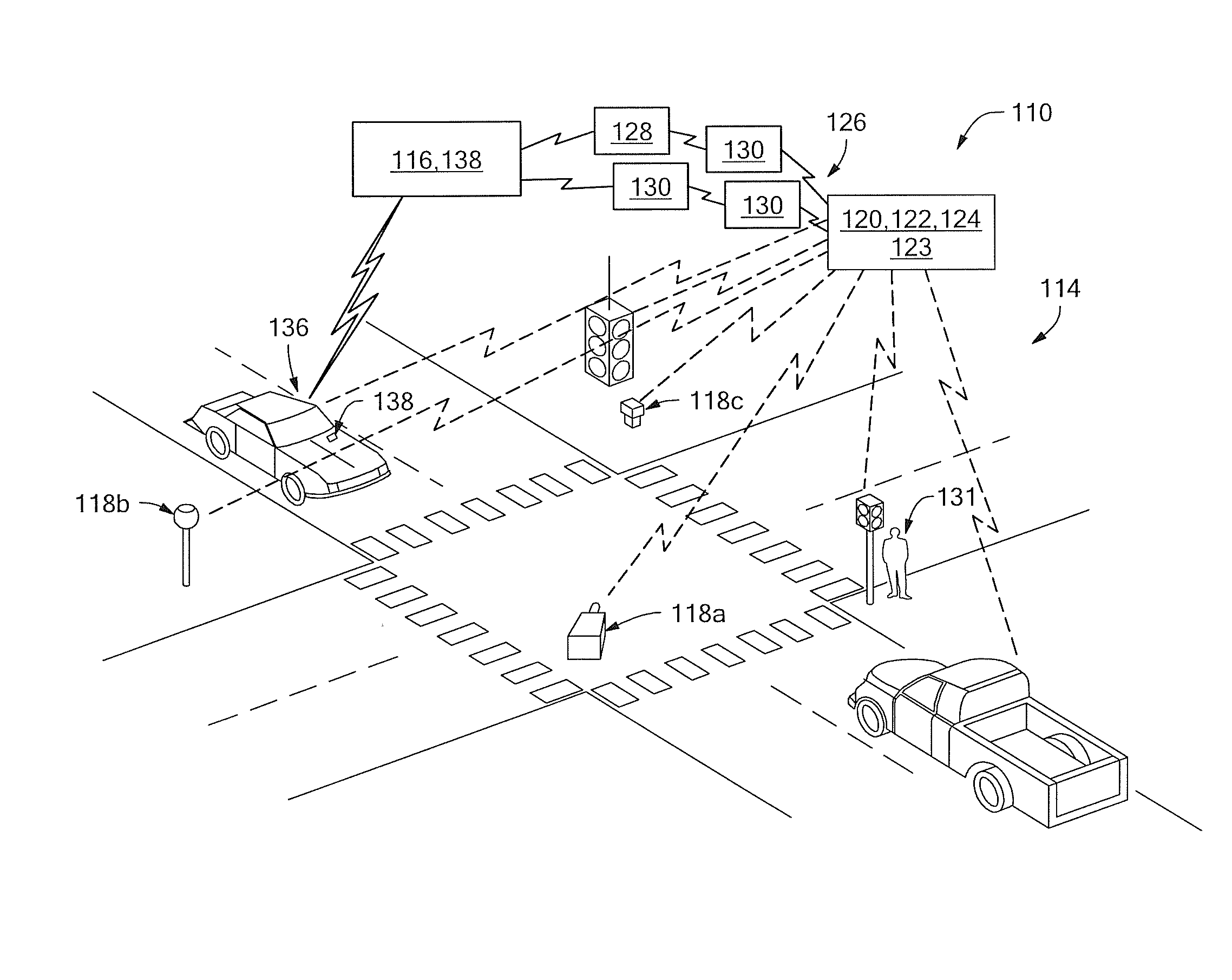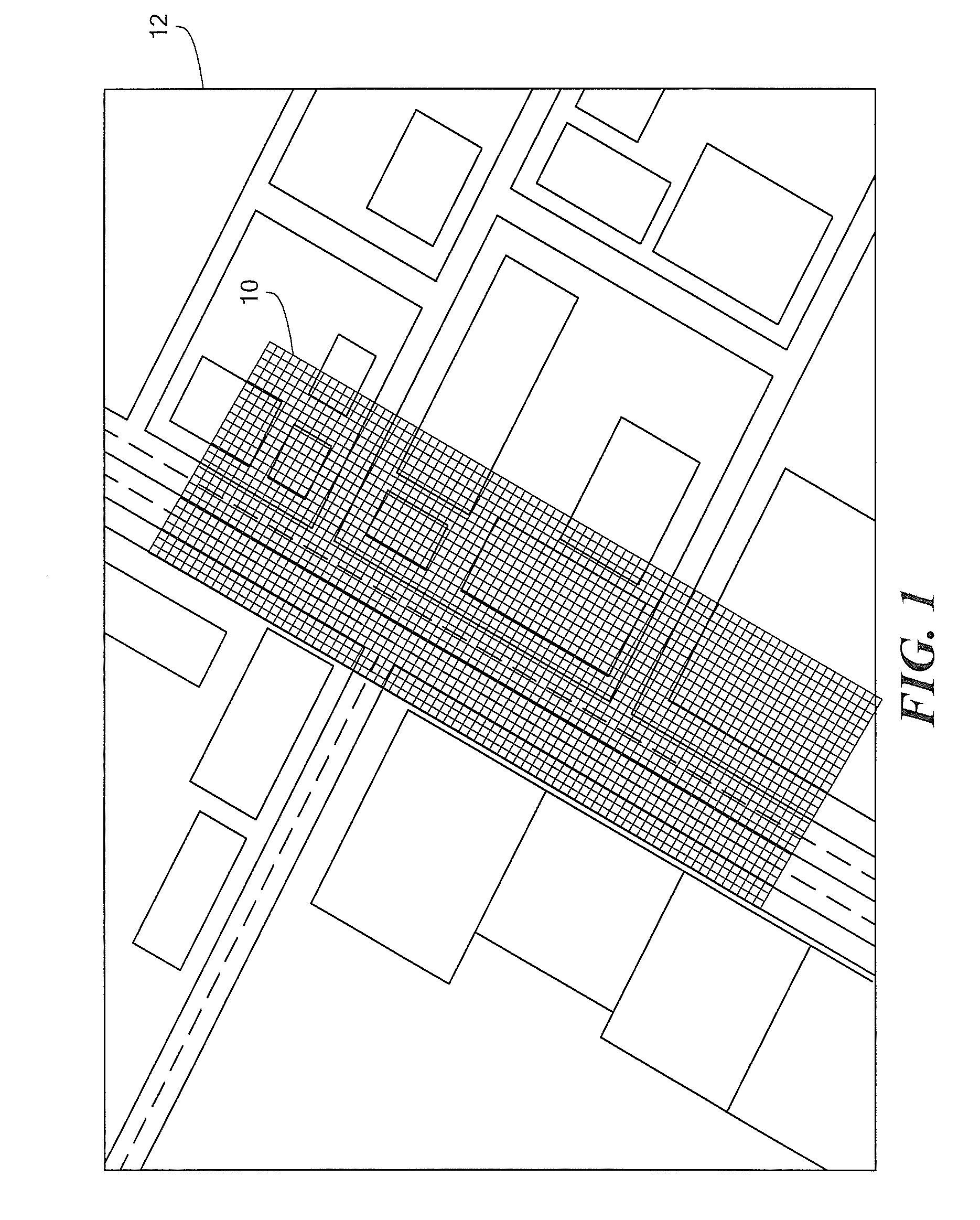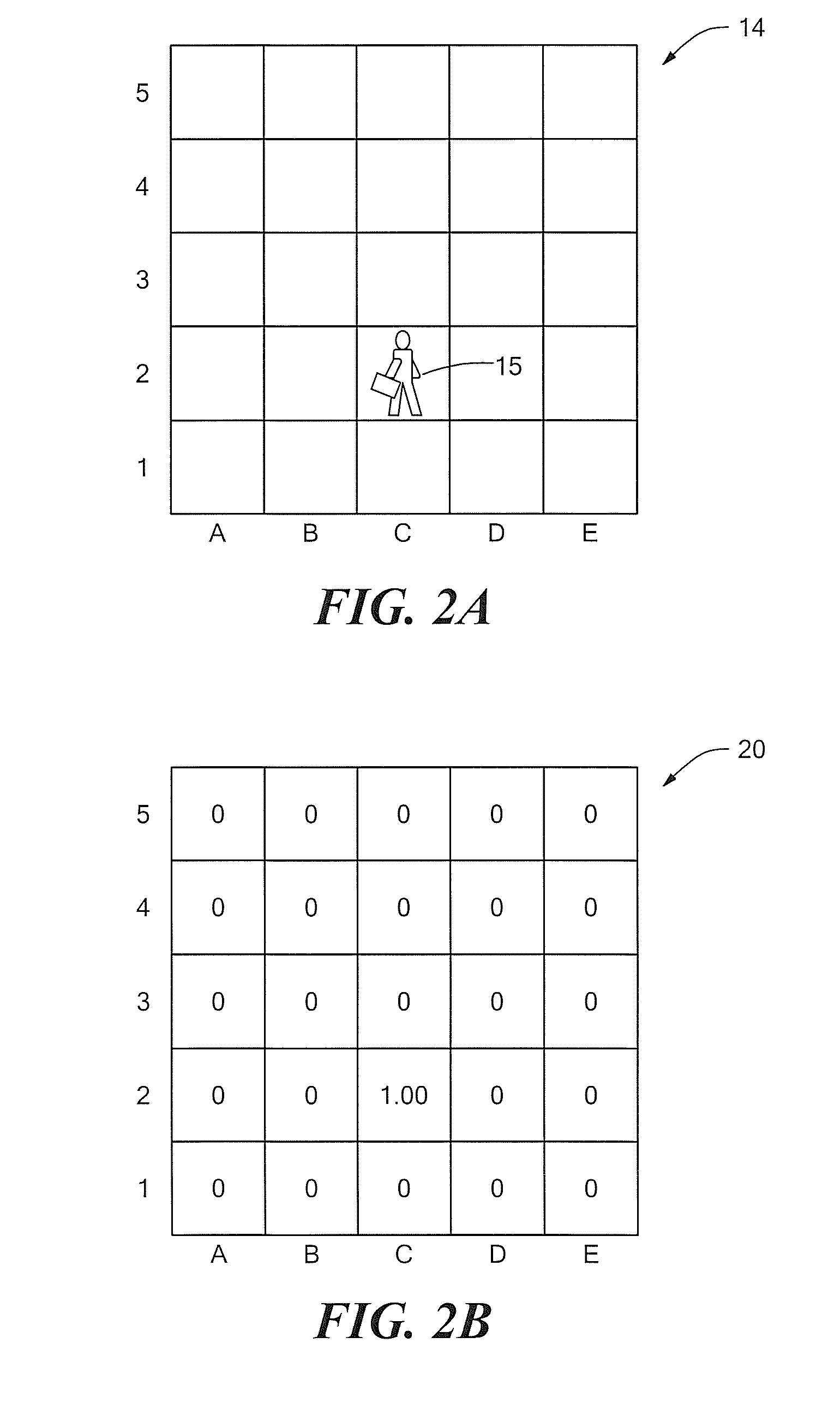Non-kinematic behavioral mapping
a non-kinematic behavioral and mapping technology, applied in the field of pedestrian warning systems, can solve the problems of reducing the response time of the driver of the vehicle, increasing the amount of time required by the vehicle-mounted system to process information, and delay between receip
- Summary
- Abstract
- Description
- Claims
- Application Information
AI Technical Summary
Benefits of technology
Problems solved by technology
Method used
Image
Examples
Embodiment Construction
[0040]Described herein is a system and methodology / processes for non-kinematic / behavioral mapping to a local area abstraction (LAA) including a methodology for populating an LAA wherein human behavior or behavior of other objects having other non-strictly-kinematic motion may be present. Before describing such a system and related processes, some introductory concepts and terminology are explained.
[0041]Reference is sometimes made herein to the use of systems and techniques in vehicular safety applications. One such vehicular safety application is referred to as a pedestrian warning system (PWS) which includes a pedestrian prediction logic (PPL) system which is an embodiment of a non-kinematic behavioral mapping system and related techniques used to predict pedestrian locations.
[0042]It should, of course, be appreciated that a PWS is but one specific example of a more general object warning system (OWS) and that the general concepts and techniques described herein are not limited to...
PUM
 Login to View More
Login to View More Abstract
Description
Claims
Application Information
 Login to View More
Login to View More - R&D
- Intellectual Property
- Life Sciences
- Materials
- Tech Scout
- Unparalleled Data Quality
- Higher Quality Content
- 60% Fewer Hallucinations
Browse by: Latest US Patents, China's latest patents, Technical Efficacy Thesaurus, Application Domain, Technology Topic, Popular Technical Reports.
© 2025 PatSnap. All rights reserved.Legal|Privacy policy|Modern Slavery Act Transparency Statement|Sitemap|About US| Contact US: help@patsnap.com



